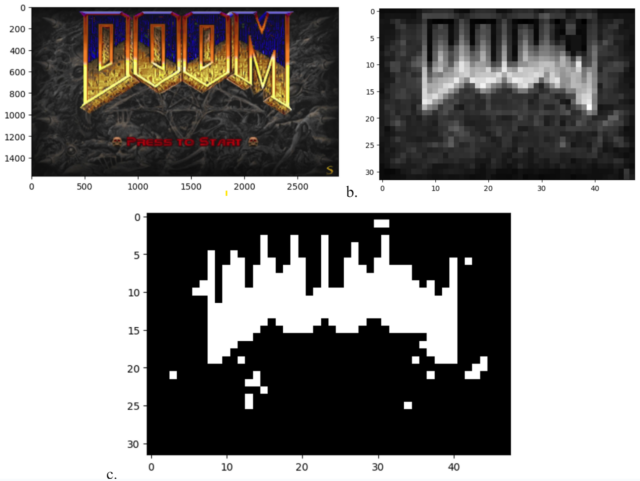Ramlan explains her bacterial grid display model and how it fits into the wider “Doom runs on everything” tradition.
Here at Ars, we’ve covered versions of Doom running on everything from hacked printers to Windows’ notepad.exe to a version running inside Doom itself. But these and the other many and varied examples of weird Doom platforms all lack the sheer biological oddness of a new model for displaying the game using a grid of E. coli bacteria.
MIT graduate student Lauren Ramlan outlines a method for creating the quixotic Doom display in “1-Bit Pixels Encoded in E. Coli for the Display of Interactive Digital Media,” the final project for a Principles of Synthetic Biology class. Ramlan’s project builds on earlier research describing how the DNA in E. coli bacteria can be used to encode full digital circuits and how the bacteria can be induced to fluoresce as a crude form of digital display.

Ramlan’s paper doesn’t go to the enormous trouble of actually encoding all of Doom to run in bacterial DNA, which the author describes as “a behemoth feat that I cannot even imagine approaching.” Instead, the game runs on a standard computer, with isolated E. coli cells in a standard 32×48 microwell grid serving as a crude low-res display.
After shrinking each game frame down to a 32×48 black-and-white bitmap, Ramlan describes a system whereby a display controller uses a well-known chemical repressor-operator pair to induce each individual cell in the grid to either express a fluorescent protein or not. The resulting grid of glowing bacteria (which is only simulated in Ramlan’s project) can technically be considered a display of Doom gameplay, though the lack of even grayscale shading makes the resulting image pretty indecipherable, to be honest.

The time needed for this whole process to cycle also limits the usefulness of the theoretical bacterial display. Using a Python model, Ramlan calculates that it would take 8 hours and 20 minutes for a glowing E. coli cell to “return approximately to its starting state,” including 70 full minutes to “reach the peak display output” during the cycle. That translates to a 0.00003 fps frame rate that would stretch a five-hour Doom run into a 599-year slog more appropriate for Ent attention spans than human life spans.
All those caveats combine to make this one of the more technicality-laden additions to the ever-growing “Doom runs on everything” list. Still, the effort shows just how far some people will go to turn anything into a theoretically Doom-ready display. As Ramlan writes in her paper, “To run Doom, all one needs is a screen and willpower.”
Listing image by byfkfkrErbe / Christopher Pooley

